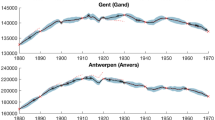Abstract
The 1970s spawned a ‘first generation’ of growth controls which featured explicit (or implicit) restrictions on residential housing construction. These restrictions were typically implemented in small, affluent, and predominantly white suburban communities. Policy analysis responded by focusing almost singlemindedly on how such supply-side restrictions might increase housing prices and drive out the poor. The 1980s and 1990s have, however, given birth to a more comprehensive ‘second generation’ of controls which many major cities and metropolitan areas are considering. This generation ties commercial and industrial as well as residential development to the reduction of the negative externalities and congestion costs associated with growth. To fully evaluate this second generation, policy analysis must take into account not only housing price effects and the rate of job creation but also the full range of ‘amenity effects’ associated with differing rates of growth and attendant levels of traffic congestion, air pollution, and other ‘public bads.’ We develop a framework for such ‘second generation’ growth control analysis using San Diego as an example.
Similar content being viewed by others
Author information
Authors and Affiliations
Rights and permissions
About this article
Cite this article
Navarro, P., Carson, R. Growth controls: policy analysis for the second generation. Policy Sci 24, 127–152 (1991). https://doi.org/10.1007/BF00138057
Issue Date:
DOI: https://doi.org/10.1007/BF00138057




